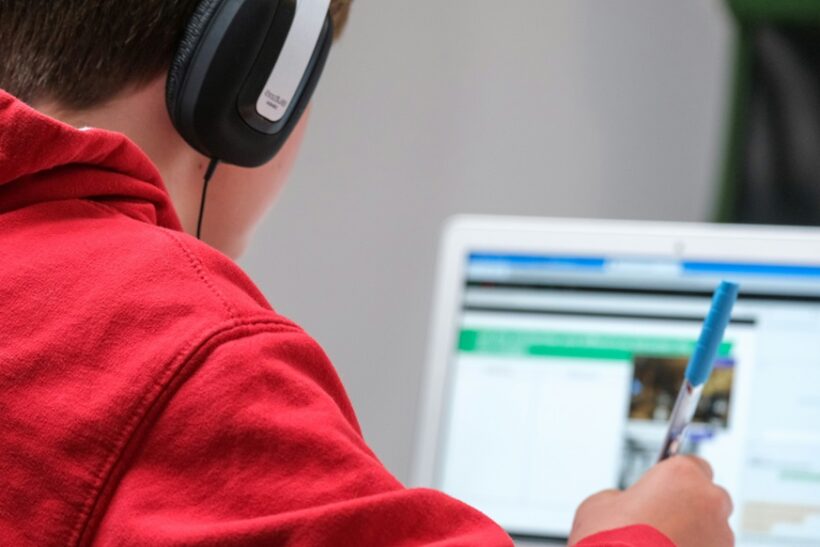Every industry, including education, has undergone transformative change thanks to rapid technological advancement. This is also evident in ESL classrooms, where technology integration has revolutionized language learning. From interactive language apps to immersive virtual experiences, technology offers many tools to enhance language acquisition and engage students in meaningful ways.
By leveraging these digital resources, educators can tailor instruction to meet the diverse needs of ESL learners, providing interactive learning experiences that promote proficiency across all language skills. So, keep reading as we explore the role of technology in ESL classrooms and the many innovative strategies teachers can use to empower language learners.
Selecting Appropriate Technologies
Tailoring technology choices to match each student’s learning needs and language skills is crucial for effective integration in ESL classrooms. By recognizing individual strengths and preferences, educators can select the most suitable tools. For instance, visual learners typically benefit from interactive apps, while auditory learners may excel with speech recognition software.
Furthermore, it’s essential to thoughtfully select technology that aligns strategically with the skills targeted for improvement. For instance, podcasts and multimedia resources are effective for enhancing listening skills, while voice recognition tools are ideal for developing speaking abilities. Digital libraries support reading proficiency, and collaborative platforms are conducive to advancing writing skills.
7 Ways to Use Technology in ESL Classrooms
In today’s digital world, the options for integrating technology into ESL classrooms are virtually limitless. However, we’ll focus on seven specific ways you can best use technology effectively in ESL education. These methods harness the power of technology to enhance language learning, promote engagement, and cater to diverse learning styles.
1. ESL blogging
Blogging is a powerful tool for language learners, offering a platform for honing writing skills and fostering interaction in the ESL classroom. By creating and maintaining their own blogs, students can practice expressing themselves in written form, receiving feedback from peers and teachers, and engaging in meaningful discussions.
Platforms like WordPress and Blogger are user-friendly options, allowing educators to set up class blogs where students can publish their writing assignments, reflections, and prompt responses.
Additionally, education-specific blogging platforms such as EduBlogs provide features tailored to language learning, such as built-in dictionaries and language translation tools, facilitating comprehension and communication for students of varying proficiency levels.
2. Podcasts in the ESL classroom
Podcasts present a wealth of opportunities for enhancing listening skills and promoting oral proficiency in ESL learners. Teachers can leverage podcasts as authentic listening materials, exposing students to diverse accents, vocabulary, and speech patterns. Furthermore, podcasts can serve as valuable resources for speaking and pronunciation exercises, with educators guiding students in imitating native speakers, practicing intonation, and refining articulation.
Here are some recommended ESL podcasts for teaching English:
- Culips ESL Podcast: This podcast offers a wide range of materials suitable for both classroom and online teaching, covering topics such as idioms, pronunciation, and study tips.
- Luke’s English Podcast: Hosted by Luke, a teacher and comedian, this podcast combines language learning with pop culture, aiming to entertain while educating students. Additional materials like videos and transcripts are available on the website for a more immersive learning experience.
- TEFLology: With over 100 episodes, TEFLology is a valuable resource for teachers seeking niche topics and professional development opportunities. Each episode includes a summary and contact information for further engagement with guests.
- Phrasally Verbocious: Hosted by two experienced English teachers living in Spain, this podcast covers various aspects of English language teaching, including classroom management and online teaching.
3. Translation technology
The integration of translation tools in ESL classrooms presents both advantages and challenges for language learners and educators alike. While translation technology can facilitate comprehension and aid in acquiring vocabulary and grammar, its overreliance may hinder students’ development of independent language skills and critical thinking abilities.
Educators should establish clear guidelines and objectives to effectively utilize translation tools in language lessons, encouraging students to employ them as aids rather than crutches. Additionally, teachers must address potential challenges such as inaccuracies, cultural nuances, and dependency issues associated with reliance on machine translation, promoting a balanced approach that prioritizes active language engagement and authentic communication.
Some of the best free translation tools to use are:
- Google Translate: Integrates with various apps, translates text in multiple languages, offers a website translation widget, enables conversation mode on mobile devices, and supports offline translation.
- Bing Microsoft Translator: Provides speech translation capabilities, utilizes translation memory, supports translation of text, real-time speech, and images, offers a project management dashboard, allows for in-context editing, integrates with various apps, and provides a website translation widget.
- DeepL: Facilitates document translation, integrates with apps, provides a website translation widget, and offers encrypted cloud storage.
- Reverso Translation: Offers document translation, provides contextual examples, includes a pronunciation guide, offers flashcards, maintains a search history, and enables the creation of vocabulary lists.
4. Language learning apps
Integrating language learning apps into ESL lesson plans can significantly enhance student engagement and learning outcomes. One effective strategy is to align app activities with lesson objectives, assigning specific tasks that reinforce classroom instruction. For example, students can use apps to practice vocabulary or grammar covered in class. Additionally, incorporating app-based activities into homework assignments encourages independent learning and allows students to progress at their own pace.
To monitor student progress and assess the effectiveness of these apps, teachers can track usage data, review completed exercises, and administer periodic quizzes or assessments based on app content. By collecting feedback from students and observing their performance, educators can identify areas for improvement and adjust lesson plans accordingly, ensuring that language learning apps complement classroom instruction effectively.
The following are some popular app choices to consider integrating with your class:
Duolingo
Duolingo is a popular language-learning app that offers interactive lessons in over 40 languages. Its key features include bite-sized exercises, gamified learning experiences, and personalized feedback to reinforce language skills.
✅ Request information on BAU's programs TODAY!
With Duolingo, users can practice reading, writing, listening, and speaking in their target language, making it ideal for ESL learners of all proficiency levels.
Memrise
Memrise is another language-learning app known for its extensive collection of user-generated flashcards and mnemonic techniques. It leverages spaced repetition and multimedia content to enhance vocabulary retention and language acquisition. Users can also join language communities and engage in peer-to-peer learning activities.
Busuu
Busuu stands out for its emphasis on social learning, allowing users to connect with native speakers for language practice and feedback. Additionally, Busuu provides personalized study plans and interactive lessons tailored to individual learning goals, making it a versatile tool for ESL learners seeking to improve their language skills in a supportive online environment.
5. Gamification of the ESL classroom
Gamification refers to the incorporation of game design elements and mechanics in non-game situations, like language learning, to increase interest and motivation. In the ESL classroom, gamified activities can make learning fun and effective by promoting competition, collaboration, and intrinsic motivation.
Examples of gamified activities include language challenges, scavenger hunts, and role-playing games, encouraging students to apply language skills in authentic and meaningful contexts. Teachers can evaluate the effectiveness of gamification in language acquisition by monitoring student participation, assessing learning outcomes, and soliciting feedback from learners.
Additionally, incorporating gamification principles such as feedback loops, progress tracking, and rewards systems can help gauge student engagement and progress over time.
6. Technology tools for better productivity
In addition to language learning apps, there are also various other technology tools that can enhance ESL instruction and learning experiences. Platforms like Zoom, Teams, and Google Meet enable educators to facilitate virtual language exchange sessions, connecting students with native speakers and language learners from around the world for authentic communication practice.
Interactive whiteboards offer dynamic multimedia presentations, interactive activities, and real-time collaboration, enhancing engagement and interactivity in ESL lessons. Furthermore, virtual reality (VR) and augmented reality (AR) technologies provide immersive language learning experiences, allowing students to explore virtual environments, interact with digital objects, and engage in simulated conversations to develop language skills in context.
7. Speech recognition software
Speech recognition software has revolutionized language learning by providing learners with instant feedback on pronunciation and speaking skills. By using speech recognition technology during speaking tasks, ESL students can practice and refine their pronunciation in a controlled and supportive environment.
Teachers can guide students in reviewing software-generated feedback, identifying specific areas for improvement, and implementing targeted practice strategies to enhance their speaking proficiency. Additionally, incorporating speech recognition software into ESL instruction allows for personalized and adaptive learning experiences, catering to individual student needs and promoting continuous improvement in spoken language abilities.
The Bottom Line
Gone are the days of tedious textbooks and monotonous drills. Instead, technology has opened up a world of possibilities for language learners. Moving forward, educators should not only integrate technology into the curriculum but also aim to embed it into teaching practices to provide comprehensive support throughout the learning process. By embracing technology, educators can empower their students to engage with languages in innovative ways, ultimately leading to more effective and enjoyable language acquisition experiences.
Ready to take your language learning journey to the next level? Enhance your English skills while immersing yourself in diverse cultural experiences with Mentora College.
FAQ
How do you use technology in ESL classrooms?
In ESL classrooms, technology can be integrated through various means, such as interactive whiteboards, language learning apps, online resources, virtual language exchange sessions, multimedia presentations, and digital assessments.
What games can be used in an ESL class?
Games such as word puzzles, vocabulary bingo, charades, and interactive online quizzes can be used in ESL classes to engage students, reinforce language concepts, and promote active participation in language learning.












